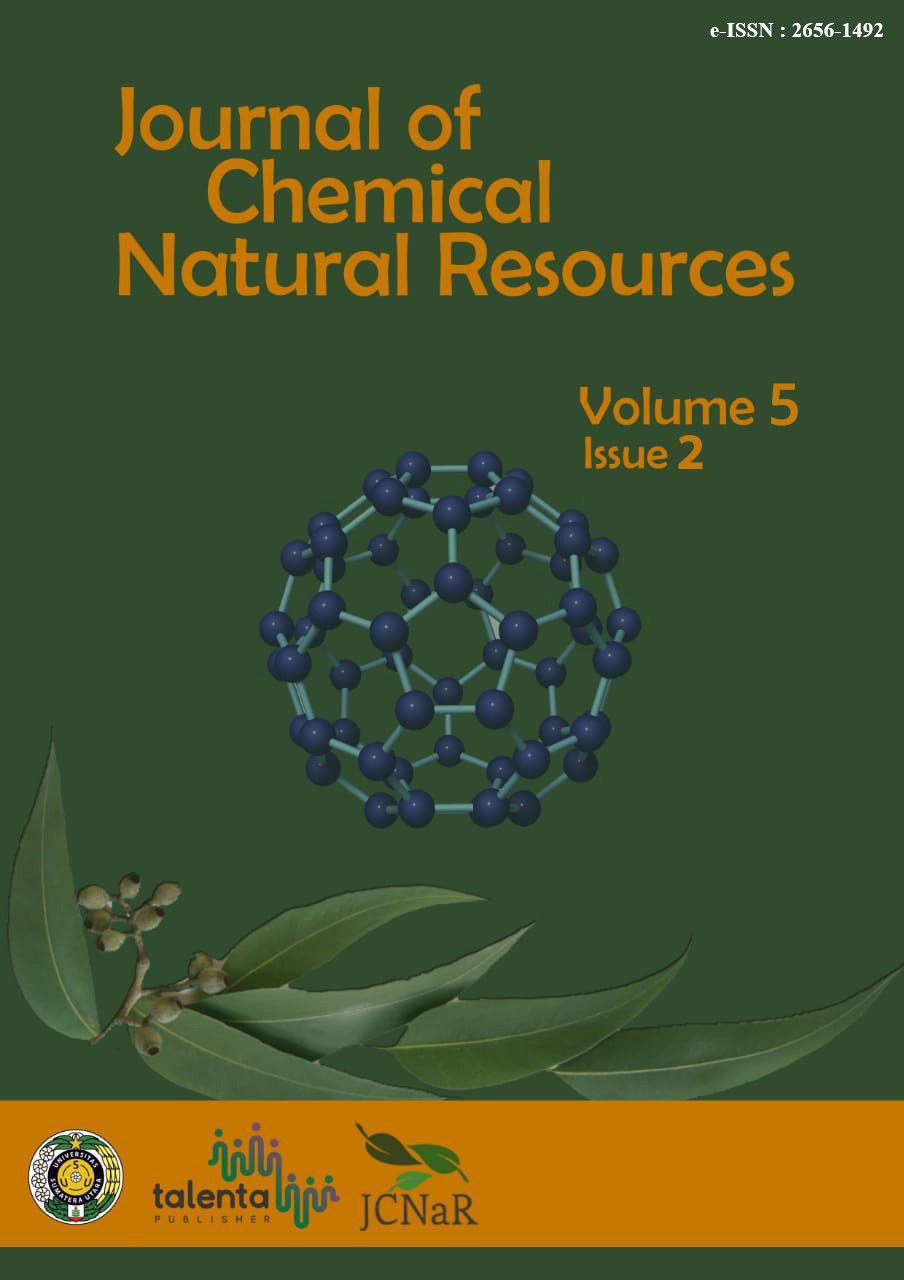Utilization of Coconut Shells Activated Charcoal in Making Solid Soap from Used Cooking Oil
DOI:
https://doi.org/10.32734/jcnar.v5i2.13857Keywords:
Coconut Shell Activated Charcoal, Free Fatty Acid, Peroxide Value, Used Cooking Oil, Solid SoapAbstract
Research on the utilization of coconut shell activated charcoal in making solid soap from used cooking oil by adding variations in the concentration of coconut shell activated charcoal by 3%, 5%, 10% and without purification. So, several parameters can be determined to test the quality of used cooking oil, namely PV, free fatty acid (FFA), color, moisture content, and odor based on SNI 3741: 2013. The parameter value of used cooking oil without purification on PV is 15,1607 mekO2/ kg. FFA, which is 0.8244 mgKOH / g. Water content is 0.1321% b / b. Smell that is not normal. The resulting color is 10.28 red / 87.00 yellow. Value The parameters of the quality of cooking oil produced from the treatment process after the addition of a variation of coconut shell activated charcoal by 10% can reduce the PV of 5.5247 mecO2/kg. FFA which is 0.2817 mgKOH / g. Water content is 0.0798% b / b. The smell becomes normal. The resulting color is 3.40 red / 35.00 yellow. It can be concluded that the concentration of the addition of coconut shell activated charcoal, which is optimal in the processing process, is by adding coconut shell activated charcoal by 10% in used cooking oil to meet the cooking oil quality standards according to SNI 3741: 2013. Solid soap-free fatty acids were not detected in the study of making solid soap from purified cooking oil. The soap solution was pink when the testing process was titrated with KOH solution 0.1 N. This is presumably because the fatty acids in used cooking oil have reacted all with NaOH so that the free fatty acids cannot be measured.
Downloads
References
R. . Akuba, “Potensi, Prospek, dan Masalah Pengembangan Kelapa,†Indonesia, 1990.
S. Wijana, Mengolah Minyak Goreng Bekas. Surabaya: Trubus Agrisarana, 2005.
S. Ketaren, “Pengantar Teknologi Minyak dan Lemak Pangan,†Jakarta, 1986.
R. M. F. M. . Wannahari, “The Recovery of Used Palm Cooking Oil Using Bagasse as Adsorbent,†Am. J. Eng. Appl. Sci., vol. 5, no. 1, pp. 59–62, 2012.
Cantika and Y, “Perbaikan Mutu Minyak Goreng Bekas dari Restoran Siap Saji Menggunakan Arang Aktif dengan Konsentrasi Yang Berbeda,†Universitas Riau, 2009.
B. S. Nasional, MINYAK GORENG SNI 3741:2013. Jakarta: Badan Standardisasi Nasional, 2013.
M. Maslahat, M. Wahab, and Yuniasti, “Uji Kualitas Fisiko Kimia Minyak Sawit Setelah Pemanasan Beberapa Kali,†J. Nusa Kim., vol. 4, no. 2, pp. 39–56, 2004.
et al Sumarlin, “Identifikasi Pewarna Sintetis Pada Produk Pangan Yang Beredar di Jakarta dan Ciputat,†UIN Syarif Hidayatullah. Jakarta, 2008.
A. G. Fox., B.A. and Cameron, Food Science. 4 th ed. London: London: Hodder and Stoughton Ltd, 1982.
Ketaren, Minyak dan Lemak Pangan. Jakarta: Universitas Indonesia, 2005.

Downloads
Published
Issue
Section
License
Copyright (c) 2023 Journal of Chemical Natural Resources

This work is licensed under a Creative Commons Attribution-ShareAlike 4.0 International License.














